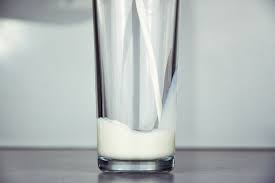Fifteen papers in this workshop proceedings cover the multiple health benefits of CLAs. Milk, most dairy products, beef, lamb, and pork are the major dietary sources of CLA. The “magical properties” of CLA include reducing the propensity to store fat (especially abdominal fat), inhibiting tumor development, promoting sensitivity to insulin in cells, increasing immune response against viral antigens, and modulating inflammatory processes. Ongoing studies are exploring the potential of CLA to delay or slow the onset of Type II diabetes, a disease reaching epidemic proportions in developed countries, including the U.S. The scope of research on CLAs is growing rapidly.
Research has established 3,500 mg/day of CLA as the dose likely to lead to health benefits – a level far above current dietary intakes. Canadian researchers have shown that beef raised on pasture and/or fed soybean, safflower, or sunflower oil-based supplements produces meat with significantly higher concentration of CLA. Beef fat tends to have 10-15 times more CLA per gram than meat tissue (depending on marbling). One study showed CLA concentrations increasing from 2.8 to 14 mg/gram of beef fat – a five-fold increase! Other research shows CLA levels in beef meat varying by a factor of 10, and reaching levels over 1 mg/gram of meat). Consuming one-half pound of high-CLA beef meat (average .6 mg/gram) would deliver about 120 mg CLA. Coupled with CLA in dairy products, high-CLA beef will help narrow the gap between current levels of CLA intake and the target level of 3,500 mg of CLA per day.
If high-CLA fat from pork is used in making sausage, researchers have shown that three to four breakfast links would deliver a daily dose of CLA.
Milk from dairy cows on organic farms, particularly pasture-based operations, contains significantly higher CLA levels (see PLOS ONE milk quality study). The difference in CLA levels between organic and conventional milk is a function of time of year, quality of pasture, levels of production, and herd health and management. CLA levels in organic milk are often found to be 30 percent or more higher than in conventional milk.
Source: “The Role of Conjugated Linoleic Acid in Human Health”
Authors: Aubie Angel, Guest Editor (Multiple author workshop proceedings)
Journal: Journal of Clinical Nutrition, June 2004 (Volume 79, Number 6(S))

